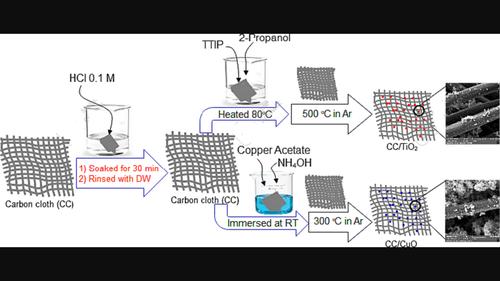当前位置:
X-MOL 学术
›
Water Environ. J.
›
论文详情
Our official English website, www.x-mol.net, welcomes your feedback! (Note: you will need to create a separate account there.)
Enhancing microbial fuel cell performance: A study on carbon cloth/TiO2 and carbon cloth/CuO electrodes
Water and Environment Journal ( IF 2 ) Pub Date : 2023-11-15 , DOI: 10.1111/wej.12908 Mojdeh Lotfi 1 , Habibollah Younesi 1 , Bita Roshanravan 1 , Nader Bahramifar 1 , Maxime Pontié 2 , Mehri Shabani 2, 3 , Meisam Tabatabaei 4 , Maryam Nazerifar 1
Water and Environment Journal ( IF 2 ) Pub Date : 2023-11-15 , DOI: 10.1111/wej.12908 Mojdeh Lotfi 1 , Habibollah Younesi 1 , Bita Roshanravan 1 , Nader Bahramifar 1 , Maxime Pontié 2 , Mehri Shabani 2, 3 , Meisam Tabatabaei 4 , Maryam Nazerifar 1
Affiliation

|
This study confirmed the efficacy of modified electrode microbial fuel cells (MFCs) in removing chemical oxygen demand (COD) and generating electricity using wastewater from industrial meat processing. The findings of linear sweep voltammetry (LSV) and cyclic voltammetry (CV) demonstrated that applying CuO particles to carbon cloth (CC) significantly reduced the charge transfer resistance, resulting in improved electrochemical performance. In the batch experiment, the MFCs were conducted by applying different electrodes and Nafion-117 as a proton exchange membrane (PEM). X-ray powder diffraction (XRD), energy-dispersive X-ray analysis (EDAX) and scanning electron microscope (SEM) analyses were performed to study the development of metal oxide on the electrode surface. The MFC operating with the CC/CuO electrode achieved a maximum COD removal (74.6%), which was attained at the peak power output of 82.56 mW/m2 and the greatest current density of 213.33 mA/m2, as indicated by the polarization curve data. In light of these findings, coating CuO on the CC anode promotes electron transfer, enhances the electrode's conductivity and increases its electrochemical surface area. In summary, the findings of this study hold significant implications for sustainable electricity production and remarkable effects on environmental quality, highlighting the strategic importance of the research approach and outputs in addressing global energy and environmental challenges.
中文翻译:

提高微生物燃料电池性能:碳布/TiO2 和碳布/CuO 电极的研究
这项研究证实了修饰电极微生物燃料电池(MFC)在去除化学需氧量(COD)和利用工业肉类加工废水发电方面的功效。线性扫描伏安法(LSV)和循环伏安法(CV)的结果表明,将CuO颗粒应用于碳布(CC)可显着降低电荷转移电阻,从而改善电化学性能。在批量实验中,通过应用不同的电极和Nafion-117作为质子交换膜(PEM)来进行MFC。通过 X 射线粉末衍射 (XRD)、能量色散 X 射线分析 (EDAX) 和扫描电子显微镜 (SEM) 分析来研究电极表面金属氧化物的发展。使用 CC/CuO 电极运行的 MFC 实现了最大 COD 去除率 (74.6%),这是在峰值功率输出 82.56 mW/m 2 和最大电流密度 213.33 mA/m 2时实现的,如极化所示曲线数据。根据这些发现,在 CC 阳极上涂覆 CuO 可以促进电子转移,增强电极的电导率并增加其电化学表面积。总之,这项研究的结果对可持续电力生产具有重大意义,并对环境质量产生显着影响,凸显了研究方法和成果在应对全球能源和环境挑战方面的战略重要性。
更新日期:2023-11-16
中文翻译:

提高微生物燃料电池性能:碳布/TiO2 和碳布/CuO 电极的研究
这项研究证实了修饰电极微生物燃料电池(MFC)在去除化学需氧量(COD)和利用工业肉类加工废水发电方面的功效。线性扫描伏安法(LSV)和循环伏安法(CV)的结果表明,将CuO颗粒应用于碳布(CC)可显着降低电荷转移电阻,从而改善电化学性能。在批量实验中,通过应用不同的电极和Nafion-117作为质子交换膜(PEM)来进行MFC。通过 X 射线粉末衍射 (XRD)、能量色散 X 射线分析 (EDAX) 和扫描电子显微镜 (SEM) 分析来研究电极表面金属氧化物的发展。使用 CC/CuO 电极运行的 MFC 实现了最大 COD 去除率 (74.6%),这是在峰值功率输出 82.56 mW/m 2 和最大电流密度 213.33 mA/m 2时实现的,如极化所示曲线数据。根据这些发现,在 CC 阳极上涂覆 CuO 可以促进电子转移,增强电极的电导率并增加其电化学表面积。总之,这项研究的结果对可持续电力生产具有重大意义,并对环境质量产生显着影响,凸显了研究方法和成果在应对全球能源和环境挑战方面的战略重要性。



























 京公网安备 11010802027423号
京公网安备 11010802027423号